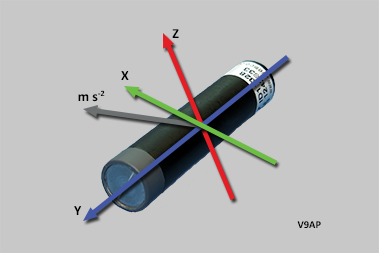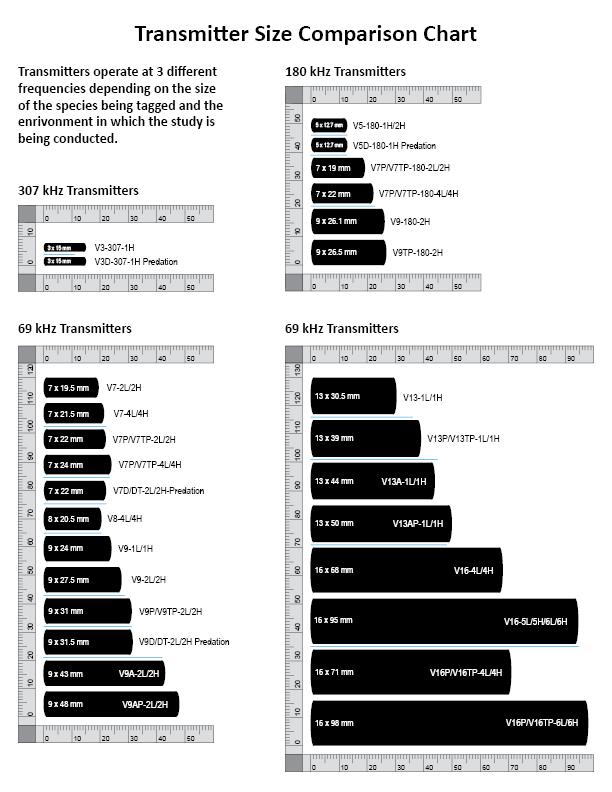V7AP, V9AP, V13AP and V16AT – Accelerometer
-
Overview
Accelerometer tags allow to collect acceleration data from your fish as they move within your receiver array. Optional pressure (in V7A, V9A and V13A) or temperature (in V16A) sensors can be added.
The animal’s acceleration signal is measured in terms of m/s-2 (SI units) and it is a vector quantity that is a result of measuring acceleration on 3 axes (X,Y,Z). This acceleration value can be used as a measure of activity of a free ranging animal in nature.
The V7A, V9A and V13A tags are also available with a pressure sensor option (V7AP, V9AP, V13AP) and the V16A has a temperature sensor option (V16AT).
These transmitters can be used in an almost endless variety of applications that require any measure of animal activity. Applications may include measuring swimming speed via tail beat acceleration, detecting mortality through predation, seismic blasting, toxic spills, feeding events, spawning activity, nocturnal/diurnal activity, wave action and activity responses to changing oxygen, salinity and temperature in the environment.
For more details, see Downloads section.
-
Gallery


-
Specifications
Accelerometer tags operate in one of two modes:
- Activity Algorithm – measures the general activity index of the body of a fish, or
- Tailbeat Algorithm – measures the undulation of a specific appendage (usually the tail)
The acceleration signal is measured at 12.5 Hz in terms of m s-2 (SI units) and is a vector quantity that is a result of measuring acceleration on two axes (X, Z) for the tailbeat algorithm, or three axes (X, Y, Z) for the activity algorithm.
-
Downloads